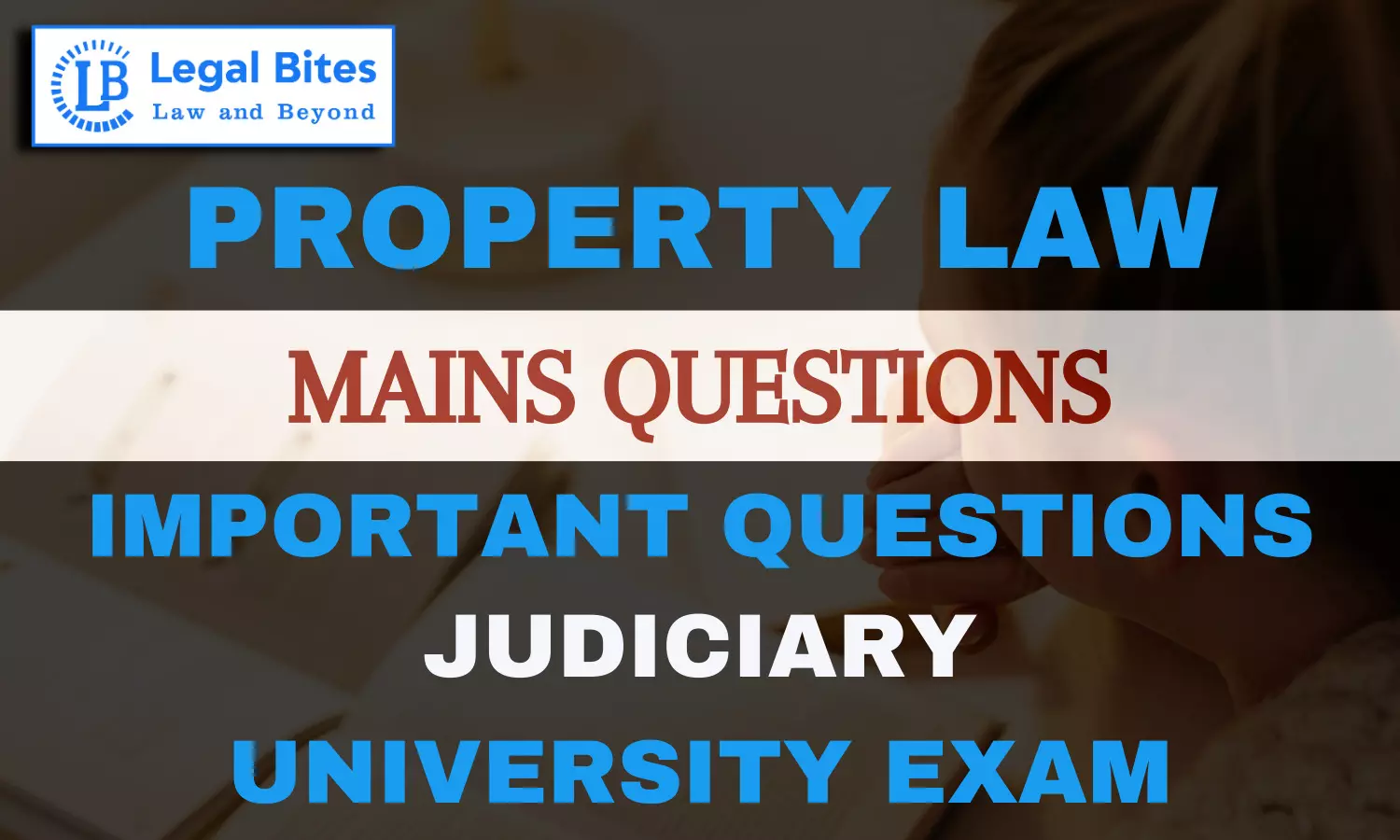In what various manners immovable property can be mortgaged? Explain.
Find the answer to the mains question of Property Law only on Legal Bites.

Question: In what various manners immovable property can be mortgaged? Explain. [BJS 2006] Find the answer to the mains question of Property Law only on Legal Bites. [In what various manners immovable property can be mortgaged? Explain.]AnswerAccording to the Transfer of Property Act of 1882, there are six different types of mortgages, as enumerated under section 58 of the act. It provides different manners in which one can mortgage their Immovable Property. The details of each type...
Question: In what various manners immovable property can be mortgaged? Explain. [BJS 2006]
Find the answer to the mains question of Property Law only on Legal Bites. [In what various manners immovable property can be mortgaged? Explain.]
Answer
According to the Transfer of Property Act of 1882, there are six different types of mortgages, as enumerated under section 58 of the act. It provides different manners in which one can mortgage their Immovable Property. The details of each type of mortgage are given below:
1. Simple Mortgage (Section 58(b)): A transaction where the mortgagor binds himself personally to pay the mortgage money without delivering possession of the mortgaged property. The mortgagee is granted the right to cause the mortgaged property's sale in the event of default, with the proceeds applied to the mortgage money. It involves the personal liability of the mortgagor, and court intervention is required for the sale of the property.
2. Mortgage by Conditional Sale (Section 58(c)): The mortgagor ostensibly sells the mortgaged property under certain conditions related to default, payment, or property transfer. The condition must be embodied in the document effecting or purporting to effect the sale. The mortgagee has rights based on the specified conditions.
3. Usufructuary Mortgage (Section 58(d)): This form involves the mortgagor delivering possession or binding himself to do so; the mortgagee retains possession, collects rents, and may use them for interest or mortgage money. The mortgagee can retain possession until payment and use rents and profits for interest or payment.
4. English Mortgage (Section 58(e)): The mortgagor binds himself to repay the mortgage money on a certain date, transferring the mortgaged property absolutely to the mortgagee, subject to a proviso for re-transfer upon payment. The property ownership transfers absolutely to the mortgagee until repayment.
5. Mortgage by Deposit of Title-Deeds (Section 58(f)): This mortgage is applicable in only certain places where delivering title-deed documents to a creditor creates a security interest.
Applicable in specified towns, subject to State Government notification. In this form, documents are delivered with the intent to create security.
6. Anomalous Mortgage (Section 58(g)): Any mortgage not falling under the categories of simple mortgage, mortgage by conditional sale, usufructuary mortgage, English mortgage, or mortgage by deposit of title deeds. This type of mortgage represents varied forms not covered by specific mortgage types.

Mayank Shekhar
Mayank is an alumnus of the prestigious Faculty of Law, Delhi University. Under his leadership, Legal Bites has been researching and developing resources through blogging, educational resources, competitions, and seminars.
